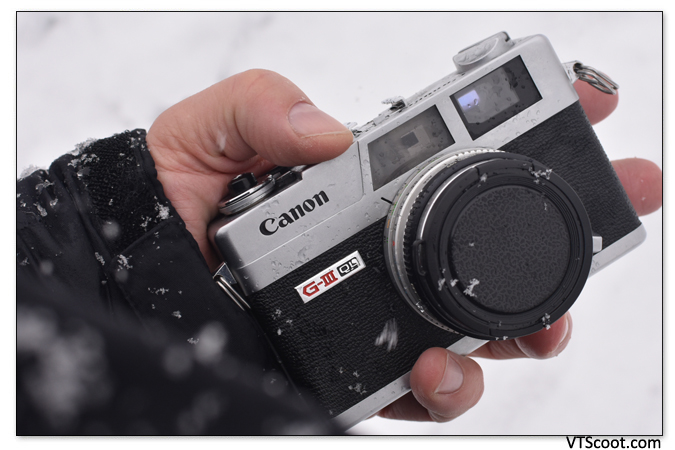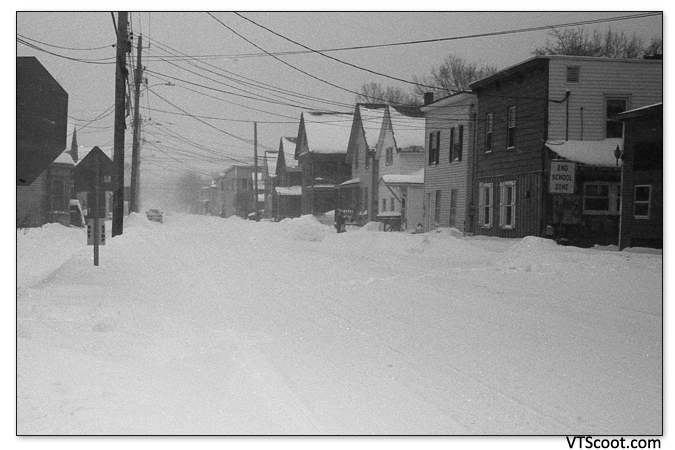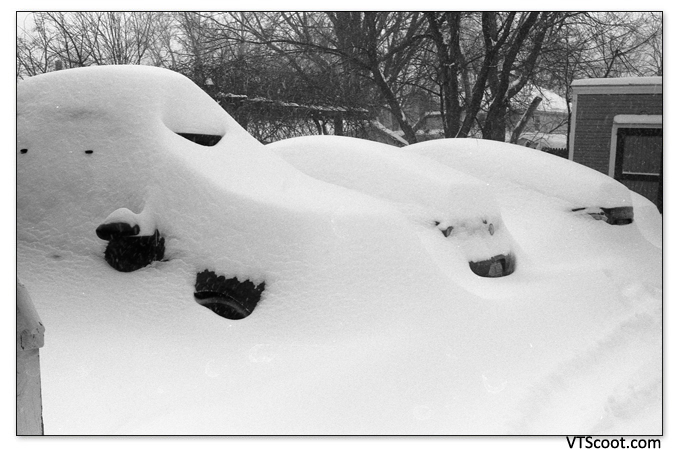Canon Canonet QL17 GIII

The Canonet is a coupled-rangefinder, leaf-shuttered camera made by Canon from the early 60’s to the early 80″s. “The Poor Mans’s Leica” is what they called it (more specifically this QL17 GIII model). Know what else they called a “Poor Man’s Leica?” Just about every rangefinder with an f/1.8 or faster lens, sold for less than 500 bucks.
For those not in the know, Leica is a high-end German camera company that is generally known for making very expensive rangefinder cameras. Very fine cameras, of course, a BMW of a camera, and it’s a highly coveted camera amongst analog and digital photographers alike. Super hyped up, but is it worth thousands of dollars? A medium format digital Leica S3, without lens, costs as much as a 2021 Volkswagen Jetta.
Now if you’re the kind of person who has more money than he knows what to do with, sure, get three of them, and be sure to extol the virtues of the Leica to all the shutterbugs with normal-people jobs. If you’re one of those normal-job types, you probably have a different kind of appreciation of the value of money, and might prefer to put that money into a down-payment on a house rather than a camera… but you still want to take good pictures. Well, you’re in luck! Other cameras do that too!

You can see side-by-side results here, where a blogger compares the shots from a 2,000 dollar vintage Leica to the same shots taken with a 150 dollar vintage Canonet. Turns out, they’re not too staggeringly different from one another.
My disdain for overpriced, over-hyped luxury toys aside, the Leica is a very well-crafted machine. Truly a premium camera. Does it live up to the hype? Probably not. Does the Canonet QL17 GIII live up to the hype of being the Poor Man’s Leica? I think probably.
There’s a lot of letters and numbers going on, let me break them down for you. The “QL” stands for “Quick Loading” to describe the pretty neat quick-loading system. Rather than manually spooling the film onto the take-up reel, there’s a metal piece that loads it for you, just pull the film leader up to the take-up spool, close the camera, and advance the film. It’s a really clever system, hard not to appreciate this feature that was ahead of it’s time in 1972 when this model was first released. The “17” refers to the integrated 40mm f/1.7 lens, a lot has been made of the quality of this lens and for good reason. The “GIII” (as in G3) denotes that this is the third generation of Canonet cameras.

The resulting all-metal machine is very compact, very sturdy, and the high quality lens and low-barrier pricetag all collectively make the Poor Man Leik’itude, and while I’ve never shot a Leica I can say I’ve enjoyed running several rolls through this camera.
The camera shoots in either shutter-priority or manual mode, with the light meter only activated during shutter-priority mode. Originally this camera used a 1.35 volt Mercury battery, which is no longer made, and you can use a 1.5v alkaline battery, but it’s not always consistent. I’ve had better luck just shooting in manual mode and either using an external light meter, a light meter app on my phone,
Another issue I’ve had is with very stiff speed and aperture controls on the lens. The focusing ring was smooth enough but adjusting the others was difficult. So because of that, plus the wonky light meter, I decided to have this camera CLA’d.
CLA is “Clean, Lubricate and Adjust.” It’s a basic servicing for a camera. This one in particular is going to be a bit of a tear down and rebuild, with everything cleaned up and checked, the light meter converted to alkaline and calibrated, and those adjustment rings will be easy to adjust. I don’t CLA all my cameras, because it can be expensive. This service cost me $160 at the local camera shop, so if I get a camera for less than $150 it seems dumb to CLA it just for CLA’s sake. However, if there are issues and I think “Would I use and enjoy this camera more if I had it fixed up?” If the answer is affirmative, then I just go ahead and spend the money.

It’s durable, compact, takes great pictures and even looks great on a shelf, I have no first-hand knowledge of how this compares to a rich-man’s Leica, but it checks enough boxes for me (or anyone) that it doesn’t even matter.
